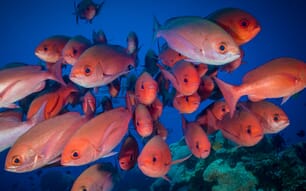Rock lobsters are a valuable and sought after seafood around the world but historically it has proven impossible to produce lobster seed stock in commercial hatcheries. In a breakthrough for aquaculture, the ARC Research Hub for Commercial Development of Rock Lobster Culture Systems has closed the lifecycle and developed unique aquaculture systems for mass production of lobster seed stock.
Australian companies are being offered the opportunity to collaborate with the University of Tasmania to scale-up and commercialise its innovative rock lobster aquaculture systems and related technologies.
The University of Tasmania’s Deputy Vice Chancellor (Research), Professor Brigid Heywood, said the research is particularly advanced with the tropical rock lobster species, Panulirus ornatus.
“This breakthrough has created exciting commercial opportunities for Australian companies interested in establishing rock lobster aquaculture ventures.
“Importantly, it also opens the door for other species that can benefit from our advances in hatchery systems design, nutrition and disease control.”
The Director of the research programme, Associate Professor Greg Smith, said the technology had been transferred to a commercial vehicle and researchers are keen to partner with others to trial the process in pilot commercial facilities.
“This world leading science, developed from over seventeen years of lobster research, has significantly reduced disease, shortened larval duration, and overcome long standing density and metamorphosis challenges.
“While further research will optimise commercial benefits and allow us to scale-up, we have demonstrated our hatchery process in mass rearing tanks which can annually produce tens of thousands of juveniles suitable for stocking commercial grow-out facilities.”
The University of Tasmania is now seeking partnerships with Australian companies to participate in the Research Hub, and invites expressions of interest from potential industry partners in developing a pilot commercial rock lobster hatchery, trialling use of the technology for slipper lobster, western rock lobster and crabs, or evaluating the suitability of the lobster feed formulation for other established aquaculture species.
The new Partner Organisations selected to join the Research Hub will benefit from access to the research capacity of the world leaders in lobster aquaculture and the funding leverage secured via the Australian Research Council’s Industrial Transformation Research Programme.
In addition to funding from the ARC the lobster propagation program at IMAS has also received long-standing support from the Tasmanian Government and early support from the Fisheries Research and Development Corporation (FRDC).




